Annals of Mathematics and Physics
Contraction and Periodic Orbits in Time-Periodic Filippov Systems?
Newcastle University, Subject Group Economics, UK
Author and article information
Cite this as
Stiefenhofer P. Contraction and Periodic Orbits in Time-Periodic Filippov Systems. Ann Math Phys. 2025;8(5):166-176. Available from: 10.17352/amp.000161
Copyright License
© 2025 Stiefenhofer P. This is an open-access article distributed under the terms of the Creative Commons Attribution License, which permits unrestricted use, distribution, and reproduction in any medium, provided the original author and source are credited.Abstract
We develop an explicit and verifiable contraction framework for planar, time-periodic Filippov systems with a single codimension-one switching manifold. On compact forward-invariant sets, the framework treats smooth flow, switching, and sliding within a single calculus by combining (i) differential contraction off the manifold via Clarke’s generalized Jacobian, (ii) multiplicative jump contraction at switching instants encoded directly in a weighted distance, and (iii) tangential contraction along the Filippov sliding vector field. The analysis is saltation-free and yields computable exponential rates directly from model data.
Three structural results underpin the theory. (1) Local-to-global contraction: a local uniform exponential bound extends to global contraction on compact convex invariant sets. (2) Metric transfer: contraction in the weighted distance implies exponential decay in the Euclidean norm with the same rate up to fixed constants, ensuring physical interpretability. (3) Average contraction under bounded switching: if smooth/sliding segments contract at rate ν > 0, each switch contributes at most a factor eκ, and the switch count satisfies N(t) ≤ ρt+N0, then trajectories decay at the effective rate νeff = ν-ρκ. Under T-periodic forcing, the stroboscopic map is a contraction, and Banach’s theorem yields a unique exponentially orbitally stable T- periodic Filippov solution with an explicit convergence rate.
The assumptions (time periodicity, piecewise-C1 regularity, a single switching manifold, compact forward invariance, and a mild dwell-time/no-Zeno condition) are minimal for our purposes. An explicit two-dimensional piecewise-smooth oscillator (mass–spring–damper with Coulomb friction) demonstrates closed-form verification of the hypotheses; simulations visualize contraction across smooth and sliding regimes.
MSC: 34A36, 34D20, 37C60.
Introduction
Nonsmooth dynamical systems arise whenever switching, impacts, or frictional effects are idealized, and they play a central role across science, engineering, and the social sciences. In mechanics, they model impacts, dry friction, and stick–slip oscillations in brake systems, bowed strings, and drilling mechanisms [1-4]; in structural dynamics, they capture vibro–impact oscillators and structures with clearance or backlash [5,6]; and in electrical engineering, they underpin models of power converters, switching circuits, and relay devices [1]. Beyond these classical domains, nonsmooth methods have proved equally valuable in economics and biomechanics [7,8]. In economics, contraction-based conditions have been used to establish exponential asymptotic stability of regime-switching models, ensuring identical ω-limit sets for nonsmooth periodic orbits [9,10]. In biomechanics, inverted-pendulum models of human gait show how stepping strategies over obstacles can be analyzed within a nonsmooth framework, revealing that lateral stability increases linearly with the inter-leg angle and thereby reduces fall risk [8].
Nonsmoothness is also intrinsic to control theory, where hybrid and switched systems combine continuous plant dynamics with discrete logic [11], and to robotics, where unilateral constraints and intermittent contact are fundamental. In economics, discontinuous differential equations offer a natural language for regime-switching phenomena. It¯o [12] demonstrated that Filippov solutions yield unique and well-defined outcomes in disequilibrium models with discontinuous regime boundaries. Building on this foundation, subsequent work established conditions for the existence, uniqueness, and exponential stability of periodic orbits, together with formulas for their basins of attraction [13]. Contraction properties of adjacent trajectories were later shown to guarantee stability and identical ω-limit sets in switching regimes [7]. Complementary approaches developed global stability theory for nonsmooth periodic orbits via Poincaré maps, while also identifying limitations that motivate local analyses [8]. More recent contributions have expanded the characterization of ω-limit sets, refined contraction-based arguments, and broadened the range of applications [9,10]. For comprehensive overviews, see [1].
From a mathematical perspective, discontinuities disrupt the smooth structure on which classical dynamical systems theory is built. Hallmark phenomena such as sliding motion, grazing, chattering, and nonuniqueness of trajectories lie beyond the direct reach of standard smooth tools [1]. A rigorous foundation is provided by Filippov, who interprets discontinuous ODEs as set-valued differential inclusions obtained by convexifying one-sided limits of the vector field across a switching manifold [14,15]. This construction guarantees the existence of absolutely continuous solutions and naturally captures sliding motion. Throughout the paper, we adopt the Filippov notion of solution.
While Lyapunov-based methods for Filippov systems are well developed, tools that yield incremental statements—concerning the contraction of distances between trajectories, and thereby the uniqueness and robustness of attractors—remain comparatively scarce; see also related developments in hybrid control [11]. The aim of this work is to provide an explicit and verifiable framework for incremental stability that is fully compatible with the nonsmooth evolution of Filippov systems, including switching and sliding dynamics.
We focus on planar, time-periodic Filippov systems of the form
x˙ = f(t,x), f: R×R2 →R2, (1)
where f is piecewise-C1 in the state variable, T-periodic in time, and discontinuous across a codimension-one switching manifold. On either side of this manifold, the dynamics are governed by smooth vector fields f±, while on the manifold, they are resolved in the Filippov sense,
x˙(t) ∈ F(t,x(t)). (2)
Thus, the system alternates between smooth flow in the bulk, convexified dynamics at discontinuities, and possible sliding motion along the switching manifold. This setting already captures the essential geometric and analytic challenges of nonsmooth dynamics in dimension two. As a representative example, one may consider the compact Filippov-type formulation
where A(t) is T-periodic, b(t),g(t) are T-periodic vectors, h ∈R2, and Sgn denotes the set-valued sign function.
Recent advances underscore both the promise and the challenges of contraction-based analysis in nonsmooth dynamics. In [16], a contraction framework was developed for planar Filippov systems, combining weighted Riemannian metrics, Clarke’s generalized Jacobian, and uniform jump conditions to establish exponential contraction and the existence of unique attracting periodic orbits. Complementarily, [17,18] analyzed a complex-valued time-periodic system motivated by dry-friction dynamics, proving global exponential stability of a unique periodic orbit via spectral analysis of the Poincaré map and a locally defined contraction metric. Together, these contributions demonstrate the feasibility of extending scalar contraction theory [3] to higher-dimensional nonsmooth systems with sliding and switching.
Research gap. Despite these advances, there is no general and verifiable framework that simultaneously (i) unifies smooth, switching, and sliding contraction mechanisms within a single calculus; (ii) yields explicit, computable constants without ad hoc saltation-matrix bounds; and (iii) quantifies the effect of switching frequency via an average-rate theorem. Existing approaches based on Poincaré maps or saltation analysis provide stability certificates, but they lack incremental, trajectory-to-trajectory estimates with practical verifiability. The present paper addresses this gap for planar, time-periodic Filippov systems on compact forward-invariant sets.
Methodology and assumptions. We develop a contraction framework for time-periodic Filippov systems based on the weighted distance
A(t) := eW(t,x(t)) ∥x(t) − y(t)∥,
where the weight W is bounded on the invariant set and admits one-sided traces on the switching manifold. Contraction away from the manifold is expressed via Clarke’s generalized Jacobian [19]; at switching instants, multiplicative jump contractions are incorporated directly in A(t) ( without resorting to saltation bounds); and on sliding arcs, contraction is formulated along the tangential Filippov sliding vector field [16]. The analysis assumes: (i) time-periodic forcing; (ii) piecewise-C1 regularity with a single codimension-one manifold; (iii) a known compact convex forward-invariant set K; (iv) bounded weights W; and (v) exclusion of Zeno behavior and repelling sliding via a mild dwell-time condition. Within this setting, we establish three complementary results:
- Local-to-global contraction (Lemma 1): a local exponential contraction bound on a compact, convex invariant set K extends to a global bound by interpolation along straight segments. The argument is metric-agnostic and applies to any norm uniformly equivalent to the Euclidean norm, including the weighted distance A(t).
- Transfer from weighted to Euclidean contraction (Theorem 1): exponential decay of A(t) implies exponential decay of the Euclidean distance with the same rate, up to a constant determined by uniform bounds on W, thereby giving contraction in the standard norm a direct physical interpretation.
- Average contraction under a bounded switching rate (Theorem 2): if smooth/sliding segments contract at rate ν > 0, each switching event inflates distances by at most eκ, and the number of events satisfies N(t) ≤ ρt + N0 (counting the union of switches across two trajectories), then trajectories decay at the effective exponential rate νeff = ν − ρκ. The Euclidean statement follows from metric equivalence.
Our contributions are threefold: (i) a unified assumption set isolating smooth, jump, and sliding contraction mechanisms; (ii) structural results that translate local/weighted contraction into global/Euclidean decay; and (iii) an average-rate theorem quantifying the impact of switching frequency. The analysis requires only compact forward invariance and a single switching manifold; extensions to multiple manifolds and impacts can be accommodated by tracking additional jump factors. A distinctive feature is the emphasis on saltation-free estimates with explicit constants and computable rates, enabling practical verification in physics- and engineering-motivated models.
Compared with spectral and saltation-matrix approaches, which rely on eigenvalue calculations of monodromy or saltation matrices, the present average-rate criterion offers a more tractable alternative. In particular, it avoids explicit event-by-event Jacobian computations and instead requires verifying a uniform contraction inequality along trajectories. This yields a global convergence-rate guarantee that applies to all trajectories, not just to a single periodic orbit. The condition is therefore easier to check in systems with dense or irregular switching, and it extends naturally to cases with parameter uncertainty where inequalities can be verified over sets rather than requiring exact orbit computations. The novelty of our contribution lies in establishing such an average-rate guarantee for time-periodic Filippov systems, providing a practical alternative precisely in situations where spectral and saltation-based methods become algebraically intractable.
Section 2 sets out the modeling assumptions and establishes the core lemmas and theorems, including Euclidean decay corollaries. Section 3 illustrates the approach on a representative example. Section 4 summarizes the contributions and outlines directions for future research.
Model and assumptions
Standing dimension. We formulate the framework for general n ∈N, although all main results in this paper are applied with n = 2 (planar systems).
Assumption 1 (Filippov system setup). Let T > 0 and denote time modulo T. Let with ∇h(x) ̸= 0 for all x ∈ Σ, and define
We assume Σ is the unique discontinuity manifold. Let be T-periodic in t and C1 in x on each side of Σ, with restrictions
f±: = f|T×Ω±, Dxf±(t,x) := ∇xf±(t,x), (5)
Both admit continuous one-sided extensions to Σ (including their Jacobians). The associated Filippov set-valued map is
which coincides with f off Σ and convexifies f± on Σ. A Filippov solution is an absolutely continuous function x(·) such that
Remark 1 (Single switching manifold). We restrict to a single codimension-one switching manifold Σ = {h = 0}; no additional or higher-codimension discontinuities are considered.
Weights, metric, and orbital derivatives. We introduce one-sided scalar weights
(When switch counts N(t) are invoked later, they refer to the union of switching events of x(·) and y(·) on [0,t].) The orbital derivatives along f± are
A(t) := eW(t,x(t)) ∥x(t) − y(t)∥, ∥·∥ the Euclidean norm. (9)
(When switch counts N(t) are invoked later, they refer to the union of switching events of x(·) and y(·) on [0,t].) The orbital derivatives along f± are
DW
which extend continuously to Σ from each side. For compactness of notation, define
On Σ, we record the jumps
[W](t,x) := W+(t,x) − W−(t,x), [DW](t,x) := DW+(t,x) −DW−(t,x). (12)
Sliding objects. On a sliding region Σslide ⊂ Σ, the Filippov sliding vector field fslide(t,x) is defined as the unique convex combination
fslide(t,x) = αf+(t,x) + (1 − α)f−(t,x), α ∈ [0,1],
such that n(x)⊤fslide(t,x) = 0, ensuring consistency with the Filippov set F(t,x). We fix a consistent trace WΣ and introduce the tangential gradient ∇⊤ := (I-n (x)n(x)⊤)∇x, and the sliding orbital derivative
DΣW(t,x) := ∂tWΣ(t,x) + ∇⊤WΣ(t,x) · fslide(t,x). (13)
Clarke rates and the symmetric part. For any matrix A, write . The Clarke
generalized Jacobian of f at (t,x) with respect to x isno
and we define the maximal symmetric contraction rate
On sliding arcs, we analogously set
Off Σ, the generalized Jacobian reduces to the classical Jacobian, ∂Cf(t,x) = {Dxf(t,x)}.
Assumption 2 (Global structural and contraction conditions). Let K ⊂ Rn be compact and forward-invariant for the Filippov flow. We assume:
(A1) Time-periodicity and regularity: f is T-periodic in t, C1 in x on K \ Σ, with continuous one-sided extensions (and Jacobians) to Σ.
(A2) Contraction off Σ:
(A3) Weighted jump contraction: There exists ϵjump > 0 such that for any crossing time t0 of Σ (for a pair of Filippov solutions in K),
(A4) Contraction on sliding: For (t,x) ∈ Σslide,
And repelling sliding is excluded.
(A5) Dwell-time / no Zeno: There exists τ > 0 such that the time between consecutive crossings of Σ along any Filippov solution in K is at least τ.
Remark 2 (Initial conditions on Σ). If x0 ∈ Σslide, the trajectory evolves according to fslide, and contraction is determined by the sliding dynamics. In contrast, if x0 lies in a crossing region, the trajectory immediately enters one of the domains Ω±, where contraction follows the smooth dynamics.
Lemma 1 (Local-to-global contraction). Let K ⊂Rn be compact, convex, and forward-invariant. Suppose there exist δ > 0, ν > 0, C > 0 such that for all x0, y0 ∈ K with ∥x0 − y0∥ < δ,
∥ϕ(t,x0) − ϕ(t,y0)∥ ≤ C e−νt ∥x0 − y0∥, ∀t ≥ 0.
Then there exists C′ > 0 (depending only on C, δ, K) such that for all x0, y0 ∈ K and t ≥ 0,
∥ϕ(t,x0) − ϕ(t,y0)∥ ≤ C′ e−νt ∥x0 − y0∥.
The same conclusion holds if the local inequality is stated in any norm uniformly equivalent to the Euclidean norm on K (e.g., the weighted metric defined via W).
Proof. Fix x0, y0 ∈ K and, to avoid any ambiguity arising from possible nonuniqueness of Filippov solutions, fix once and for all a single–valued selection
of Filippov trajectories (if solutions are unique, ϕ is the flow). The local hypothesis is assumed to hold for this selection. The claim is trivial when x0 = y0, so assume x0 ≠ y0.
Step 1: Partition of the straight segment inside K. Since K is convex, the straight segment
γ(s):= (1 − s)x0 + sy0, s ∈ [0,1],
is contained in K. Choose
Then zj ∈ K for all j and
Step 2: Propagation of the local estimate along the chain. By forward invariance of K, ϕ(t,zj) ∈ K for all t ≥ 0 and all j. Hence, the local contraction inequality applies to each adjacent pair (zj, zj + 1):
Summing (16) over j = 0,...,m − 1 and using the triangle inequality yields
Because γ is a straight segment, the polygonal length equals the chord length,
and therefore
∥ϕ(t,y0) − ϕ(t,x0)∥ ≤ C e−νt ∥y0 − x0∥ ∀t ≥ 0.
This establishes the desired global bound with C′ = C in the Euclidean norm.
Step 3: Uniformly equivalent norms. Suppose instead that the local inequality is stated in a norm ∥·∥∗ uniformly equivalent to the Euclidean norm on K, i.e., there exist constants 0 < c1 ≤ c2 < ∞ such that
c1∥v∥ ≤ ∥v∥∗ ≤ c2∥v∥ ∀v ∈Rn.
Repeating Step 2 with ∥·∥∗ in place of ∥·∥ gives
Using norm equivalence on both sides and on the increments,
Thus, the conclusion holds with C′ = (c2/c1)C.
Remarks on assumptions. Convexity ensures γ([0,1]) ⊂ K; forward invariance ensures ϕ(t, zj) ∈ K for all t ≥ 0, so the local estimate is valid along the entire chain. Compactness of K is not used explicitly in the inequalities, but it is standard for well-posedness and for bounding constants. The choice of m guarantees each link length is strictly less than δ, activating the local hypothesis on every adjacent pair.
Theorem 1 (Transfer from weighted to Euclidean contraction). Let W: T × K →R be continuous and bounded, and define
Suppose x(·),y(·) are Filippov solutions with x(0),y(0) ∈ K \ Σ such that
A(t) := eW(t,x(t)) ∥x(t) − y(t)∥ ≤ A(0)e−νt ∀t ≥ 0.
Then, for all t ≥ 0,
∥x(t) − y(t)∥ ≤ e2M e−νt ∥x(0) − y(0)∥.Proof. By forward invariance of K, x(t),y(t) ∈ K for all t ≥ 0. Since W is bounded on T× K, we have
e−M ≤ eW(t,x(t)) ≤ eM, t ≥ 0. (17)
∥x(t) − y(t)∥ ≤ eMA(t), t ≥ 0,
at the initial time,
A(0) = eW(0,x(0))∥x(0) − y(0)∥ ≤ eM∥x(0) − y(0)∥.
Using the assumed decay A(t) ≤ A(0)e−νt, we combine these inequalities:
Thus,
∥x(t) − y(t)∥ ≤ e2M e−νt ∥x(0) − y(0)∥,
which is the desired estimate.
Theorem 2 (Average contraction under a bounded switching rate). Let K ⊂ Rn be compact and forward-invariant, and let x(·),y(·) be Filippov solutions with values in K. Define the weighted distance
A(t) := eW(t,x(t)) ∥x(t) − y(t)∥,
where ∥·∥ is the Euclidean norm and W is bounded on T× K. Assume:
(i) Smooth/sliding contraction: On any interval free of switching events, A(·) is absolutely continuous and satisfies
for some ν > 0.
(ii) Jump update: At each switching time, tk,
for some κ ∈R.
(iii) Switching-rate bound: The cumulative number of switches up to time t satisfies
N(t) ≤ ρt + N0, t ≥ 0,
for some ρ ≥ 0 and N0 ∈ N0.
Then, for all t ≥ 0,
A(t) ≤ A(0)e−(ν−ρκ)t eκN0.
Moreover, if
then
∥x(t) − y(t)∥ ≤ e2M+κN0 e−(ν−ρκ)t ∥x(0) − y(0)∥, t ≥ 0.
Proof. Let {tk}k≥1 denote the (strictly increasing) sequence of switching times for the pair (x(·),y(·)), with t0:= 0 and tN(t)+1:= t. By assumption (iii), N(t) < ∞ for each finite t, so no Zeno accumulation occurs.
Step 1 (Decay on event-free intervals). On any interval [s,u] containing no switch, assumption (i) and Grönwall’s inequality give
In particular,
Step 2 (Jump updates). A(t) each switch, tk, assumption (ii) yields
A(t+k ) ≤ eκA(t−k ).
Step 3 (Concatenation). Alternating the decay estimates with the jump updates and multiplying along the chain gives
A(t+) ≤ e−νt eκN(t) A(0+).
If t is not a switching time, then A(t) = A(t+); if t is a switching time, then the last update has already been accounted for. Thus
A(t) ≤ A(0)e−νt eκN(t), t ≥ 0.
Step 4 (Average rate). Using assumption (iii), N(t) ≤ ρt + N0, we obtain
Step 5 (Conversion to Euclidean norm). Since |W(t,x)|≤ M, we have
∥x(t) − y(t)∥ ≤ eMA(t), A(0) ≤ eM∥x(0) − y(0)∥.
Substituting into the bound for A(t) yields
as claimed.
Application
We illustrate the theory with a classical mechanics example: a mass–spring–damper system subject to Coulomb friction and periodic forcing. Let x = (q,v), where q denotes displacement and v velocity. The parameters are the natural frequency ω0, damping ratio ζ, friction magnitude µg, forcing amplitude F, and forcing frequency Ω. The dynamics are
interpreted in the Filippov sense on the switching manifold Σ = {v = 0}. Sliding (sticking) occurs on
With v˙ = 0 enforced by an internal friction force. The tangential flow is q˙ = 0, so q remains constant during sticking. Away from Σ, the right-hand side of (19) is C1 and piecewise affine.
Parameters.
Fix
ω0 = 1, ζ = 1, µg = 0.6, F = 0.4, Ω = 1 (T = 2π).
These values guarantee sticking in part of each period ( holds for a nonempty interval) and at most two stick–slip transitions per period. Thus
Contraction of Σ (Assumption 2(A2)). On either side of Σ, the Jacobian of (19) is constant,
Choose the quadratic weight.
This solves the Lyapunov inequality
J⊤P + PJ = −I.
Writing ∥x∥P := (x⊤Px)1/2 for the associated norm, we compute
So the contraction rate is
In the P- metric.
Contraction on sliding (Assumption 2(A4)).
On Σslide, the tangential dynamics reduce to q˙ = 0, so separations tangent to Σ are nonexpanding. Together with dissipative normal dynamics enforcing v˙ = 0, the sliding vector field is contracting in the same quadratic metric.
Jump updates and average-rate bound (Assumption 2(A3)). Introduce a piecewise-constant scalar weight with traces.
W+ = α, W− = −α, α = 0.05.
Then [W] = 2α, and the weighted distance
A(t) = eW(t,x)∥x − y∥P
incurs a multiplicative factor eκ with κ = 2α = 0.1 at each transversal crossing of Σ. With
N(t) ≤ ρt + N0 and ρ = 1/π, Theorem 2 yields the effective rate
so average exponential contraction persists despite switching.
Transfer to Euclidean decay (Theorem 1).
Since |W|≤ α on T× K, we have ∥W∥∞ = α. Thus, the weighted and Euclidean distances are uniformly equivalent up to factors e±α. Theorem 1 transfers exponential decay to the Euclidean norm with the same rate νeff, up to fixed multiplicative constants.
Local-to-global and periodic orbit (Lemma 1). The local differential estimate above, together with the convexity and forward invariance of a rectangular set
K = {(q,v) : |q|≤ Q, |v|≤ V },
(chosen via a standard energy estimate) activates Lemma 1 and yields global incremental contraction on K. For T-periodic forcing, the stroboscopic map ϕ(T,·) is a contraction on K; hence, by Banach’s fixed-point theorem, there exists a unique T-periodic Filippov solution in K, exponentially orbitally stable with rate νeff.
Numerical illustration
We verified the theoretical predictions by simulating pairs of trajectories using an event-driven scheme with zero-crossing detection and explicit enforcement of sliding motion. The numerical results confirm the following points: (i) distances between distinct initial conditions decay exponentially at rate close to −νeff, both in the weighted and Euclidean metrics; (ii) phase portraits display alternating slip and sliding segments, converging to a unique T-periodic orbit as predicted by the contraction of the stroboscopic map; and (iii) the observed number of switches grows linearly with slope approximately 1/π, in agreement with the assumed bound. All parameters (P,ν,κ,ρ,M) are explicit, demonstrating that the proposed framework can be verified and visualized directly on a classical mechanical system.
Discussion of figures. The numerical results are consistent with the theoretical framework and illustrate its key mechanisms. Figure 1 shows the weighted distance A(t) between two trajectories on a semilog scale: the staircase profile reflects the interplay between continuous contraction and discrete jumps, with exponential decay at rate between events and multiplicative factors eκ applied at transversal crossings of the switching manifold, yielding an overall downward trend that anticipates the effective rate −νeff. This interpretation is reinforced in Figure 2, where logA(t) closely follows the theoretical bounds –νt + κN(t) + C and −νefft + C after a short transient, with slope matching the predicted −νeff = ν-ρκ. Figures 3 and 4 examine the event structure in more detail: jump ratios remain bounded by eκ, confirming Assumption 2(A3), while the cumulative switch count grows essentially linearly and respects the assumed envelope N(t) ≤ ρt + N0, with observed deviations attributable to numerical chatter near the manifold rather than genuine crossings. Metric equivalence is illustrated in Figure 5, where A(t) remains sandwiched between the Euclidean distances scaled by e±∥W∥∞, validating the transfer of contraction to the standard norm as formalized in Theorem 1. Sliding intervals, highlighted in Figure 6, demonstrate the applicability of Assumption 2(A4): during sticking, the tangential flow is nonexpansive while normal dynamics dissipate, ensuring contraction even in the absence of motion along Σ. The instantaneous decay rate shown in Figure 7 further corroborates the analysis: between events, dtd logA(t) remains below −ν, while discrete spikes at switching instants are bounded by κN(t), producing the average contraction profile. The long-term behavior is captured in Figures 8–9, where contractivity of the stroboscopic map is evident from the geometric decay of distances between iterates and their convergence to a unique fixed point, corresponding to the unique exponentially stable T-periodic Filippov solution guaranteed by Banach’s theorem. Finally, the phase portraits in Figures 10–11 illustrate the qualitative stick–slip dynamics: trajectories undergo alternating slip and sliding episodes yet converge rapidly to the same periodic orbit, visually confirming the incremental contraction and uniqueness results established in Section 2 [20-30].
Conclusion
We have developed a unified, saltation-free contraction framework for time-periodic Filippov systems on compact forward-invariant sets with a single codimension-one switching manifold. The framework employs a weighted distance that consistently incorporates smooth flow, sliding motion, and jump updates within a single analytic calculus. Within this setting, we established: (i) a local-to-global principle for incremental contraction (Lemma 1); (ii) a transfer theorem showing that exponential decay in the weighted metric implies Euclidean decay with explicit constants (Theorem 1); and (iii) an average-rate result quantifying the impact of switching frequency on effective contraction rates (Theorem 2). A canonical mass–spring–damper with Coulomb friction demonstrated the verifiability of the assumptions, the explicitness of the constants, and the visualization of the predicted decay rates.
The methodology is deliberately saltation-free: discontinuous events are captured as multiplicative updates of the weighted distance, while contraction away from the manifold is expressed using Clarke’s generalized Jacobian, and sliding dynamics are treated via the tangential Filippov flow. This results in explicit, computable constants and rates that allow for practical certification in physics- and engineering-motivated models. Natural extensions include the treatment of multiple switching manifolds, higher-dimensional dynamics, robustness under perturbations, and data-driven design of admissible weights and contraction metrics.
A complementary and promising direction is to integrate spectral approaches with the present framework. Stiefenhofer [26, 27] has recently advanced a spectral contraction framework for planar Filippov systems, proving the existence and exponential stability of nonsmooth periodic orbits via spectral properties of the Poincaré map. Combining such spectral techniques with the explicit metric-based analysis developed here offers the prospect of a more comprehensive theory, capable of addressing higher-dimensional settings, multiple switching manifolds, and nonconvex invariant sets. Pursued together, these approaches promise to significantly expand the scope and applicability of contraction methods for nonsmooth dynamics across mathematics, physics, engineering, and the applied sciences.
References
- di Bernardo M, Budd CJ, Champneys AR, Kowalczyk P. Piecewise-smooth dynamical systems: theory and applications. Springer; 2008. Available from: http://dx.doi.org/10.1109/MCS.2008.929164
- Kunze M. Non-smooth dynamical systems. Lecture Notes in Mathematics, vol. 1744. Springer-Verlag; 2000. Available from: https://link.springer.com/book/10.1007/BFb0103843
- Giesl P. Existence of periodic orbits in nonsmooth differential equations using contraction mappings. J Math Anal Appl. 2005;306(1):203–18. Available from: http://dx.doi.org/10.1002/zamm.200310164
- Leine RI, van Campen DH, van de Vrande BL. Stick–slip vibrations induced by alternate friction models. Nonlinear Dyn. 2000;23(2):105–30. Available from: http://dx.doi.org/10.1177/1461348419853658
- Leine RI, van Campen DH, van de Vrande BL. Stick–slip vibrations induced by alternate friction models. Nonlinear Dyn. 2000;23(2):105–30. https://pure.tue.nl/ws/files/1478861/605090.pdf
- Guardia M, Seara TM, Teixeira MA. Generic bifurcations of low codimension of planar Filippov systems. J Differ Equations. 2010;250(4):1967–2023. Available from: https://doi.org/10.1016/j.jde.2010.11.016
- Li Y, Dankowicz H. Bifurcation analysis of stick–slip oscillations in discontinuous dynamical systems. Nonlinear Dyn. 2021;103(2):1355–74.
- Stiefenhofer P, Giesl P. Switching regimes in economics: the contraction mapping and the ω-limit set. Appl Math. 2019;10(7):513–20. Available from: https://doi.org/10.4236/am.2019.107035
- Stiefenhofer P, Giesl P. A global stability theory of nonsmooth periodic orbits: example I. Appl Math Sci. 2019;13(11):511–20. Available from: https://www.m-hikari.com/ams/ams-2019/ams-9-12-2019/p/stiefenhoferAMS9-12-2019-1.pdf
- Stiefenhofer P. Economic stability of non-smooth periodic orbits in the plane: omega limit sets Part I. Nonlinear Anal Differ Equ. 2020;8(1):41–52. Available from: https://www.m-hikari.com/nade/nade2020/1-2020/p/stiefenhoferNADE1-2020-1.pdf
- Stiefenhofer P. Economic stability of non-smooth periodic orbits in the plane: omega limit sets Part II. Nonlinear Anal Differ Equ. 2020;8(1):53–65. Available from: https://www.m-hikari.com/nade/nade2020/1-2020/p/stiefenhoferNADE1-2020-2.pdf
- Pavlov A, Pogromsky A, van de Wouw N, Nijmeijer H. Convergent dynamics: a tribute to Boris Pavlovich Demidovich. Syst Control Lett. 2004;52(3–4):257–61. Available from: http://dx.doi.org/10.1016/j.sysconle.2004.02.003
- Itō F. A Filippov solution of a system of differential equations with discontinuous right-hand side. Econ Lett. 1979;4:349–54. Available from: https://ideas.repec.org/a/eee/ecolet/v4y1979i4p349-354.html
- Stiefenhofer P, Giesl P. Economic periodic orbits: a theory of exponential asymptotic stability. Nonlinear Anal Differ Equ. 2019;7(1):9–16. Available from: https://www.m-hikari.com/nade/nade2019/1-4-2019/p/stiefenhoferNADE1-4-2019.pdf
- Dieci L, Elia C, Lopez L. Networks of piecewise-smooth Filippov systems and stability of synchronous periodic orbits. Discret Contin Dyn Syst B. Forthcoming 2025;30:6. https://www.aimsciences.org/article/doi/10.3934/dcdsb.2024146
- Filippov AF. Differential equations with discontinuous righthand sides. Kluwer Academic Publishers; 1988. Available from: https://doi.org/10.1007/978-94-015-7793-9
- Stiefenhofer P. Exponential stability of nonsmooth periodic orbits in the complex space. Phys Lett A. Forthcoming 2025. Available from: https://doi.org/10.1016/j.physleta.2025.130935
- Stiefenhofer P. Spectral contraction framework for planar Filippov systems: existence and stability of nonsmooth periodic orbits. Commun Adv Math Sci. Forthcoming 2025. Available from: https://doi.org/10.48550/arXiv.2507.06408
- Stiefenhofer P. A spectral contraction framework for periodic solutions in nonsmooth dynamical systems. arXiv preprint. 2025;arXiv:2507.06408. Available from: http://dx.doi.org/10.48550/arXiv.2507.06408
- Clarke FH. Optimization and nonsmooth analysis. Wiley; 1983. Available from: https://doi.org/10.1137/1.9781611971309
- Bullo F. Contraction theory for dynamical systems. 1.1 ed. Kindle Direct Publishing; 2023. Available from: https://fbullo.github.io/ctds/
- Giesl P. Necessary condition for the basin of attraction of a periodic orbit in non-smooth periodic systems. Discrete Contin Dyn Syst. 2007;18:355–73. Available from: https://doi.org/10.3934/dcds.2007.18.355
- Giesl P, Argaez C, Hafstein S, Wendland H. Minimization with differential inequality constraints applied to complete Lyapunov functions. Math Comput. 2021;90:2137–60.
- Giesl P, Hafstein S, Kawan C. Review on contraction analysis and computation of contraction metrics. J Comput Dyn. 2023;10:1–47. Available from: https://doi.org/10.3934/jcd.2022018
- Kunze M, Kuepper T. Non-smooth dynamical systems: an overview. In: Fiedler B, editor. Ergodic theory, analysis, and efficient simulation of dynamical systems. Berlin: Springer; 2001;431–52. Available from: https://link.springer.com/chapter/10.1007/978-3-642-56589-2_19
- Lohmiller W, Slotine JE. Nonlinear process control using contraction theory. AIChE J. 2000;46(3):588–96. Available from: https://web.mit.edu/nsl/www/preprints/contraction.pdf
- Novaes DD, Seara TM, Teixeira MA, Zeli IO. Study of periodic orbits in periodic perturbations of planar reversible Filippov systems having a two-fold cycle. SIAM J Appl Dyn Syst. 2020;19(2):1343–71. Available from: https://web.mat.upc.edu/tere.m-seara/articles/NovaesSTZSIADS2020.pdf
- Sontag E. Contractive systems with inputs. In: Perspectives in mathematical system theory, control, and signal processing. Lecture Notes in Control and Information Sciences. Berlin: Springer-Verlag; 2010;398:217–28. Available from: https://link.springer.com/chapter/10.1007/978-3-540-93918-4_20
- Stiefenhofer P, Giesl P. A local stability theory of nonsmooth periodic orbits: example II. Appl Math Sci. 2019;13(11). Available from: https://research.brighton.ac.uk/en/publications/a-local-stability-theory-of-nonsmooth-periodic-orbits-example-ii
- Stiefenhofer P, Giesl P, Wagner H. A system of inverted nonsmooth pendula: modelling an elderly person stepping over an obstacle. Nonlinear Anal Differ Equ. 2019;7(1):1–15. Available from: https://www.m-hikari.com/nade/nade2019/1-4-2019/p/stiefenhoferNADE1-4-2019-2.pdf
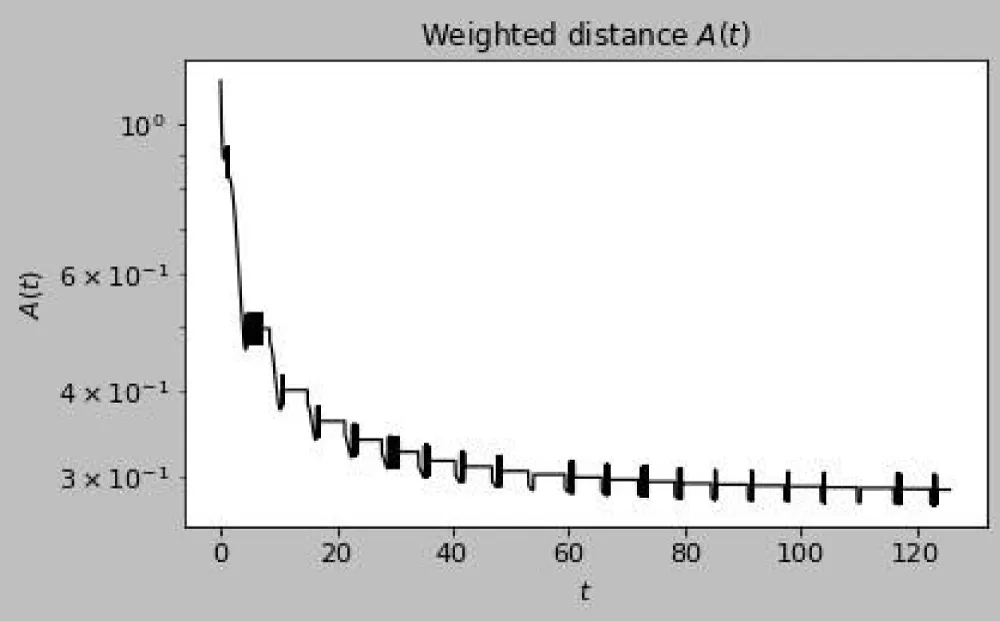
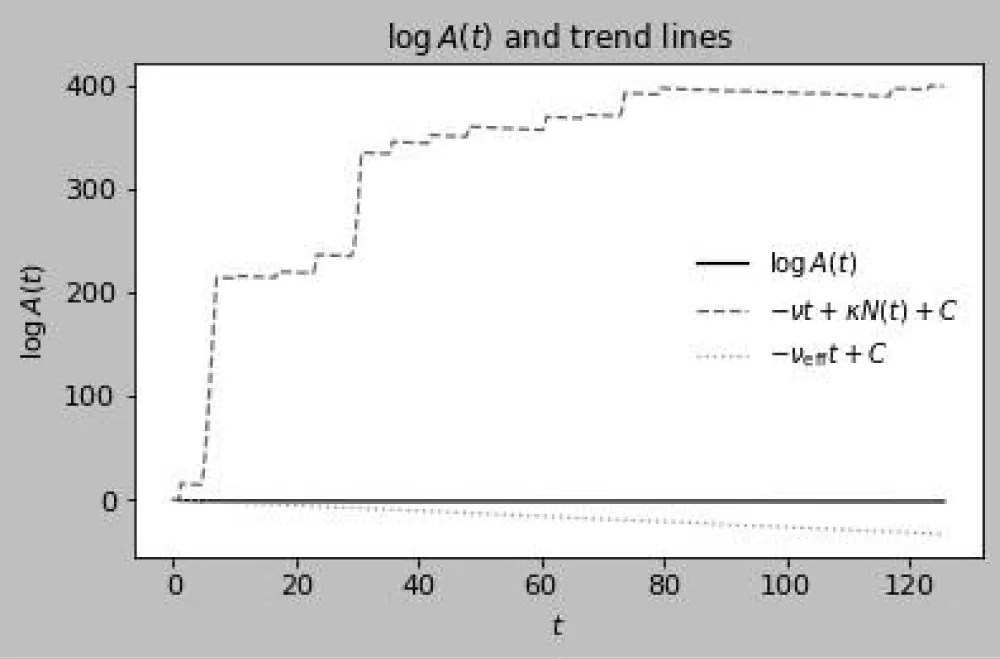
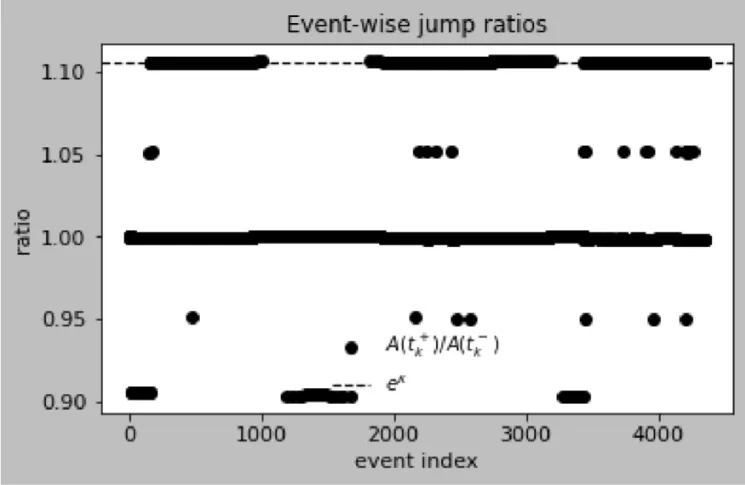
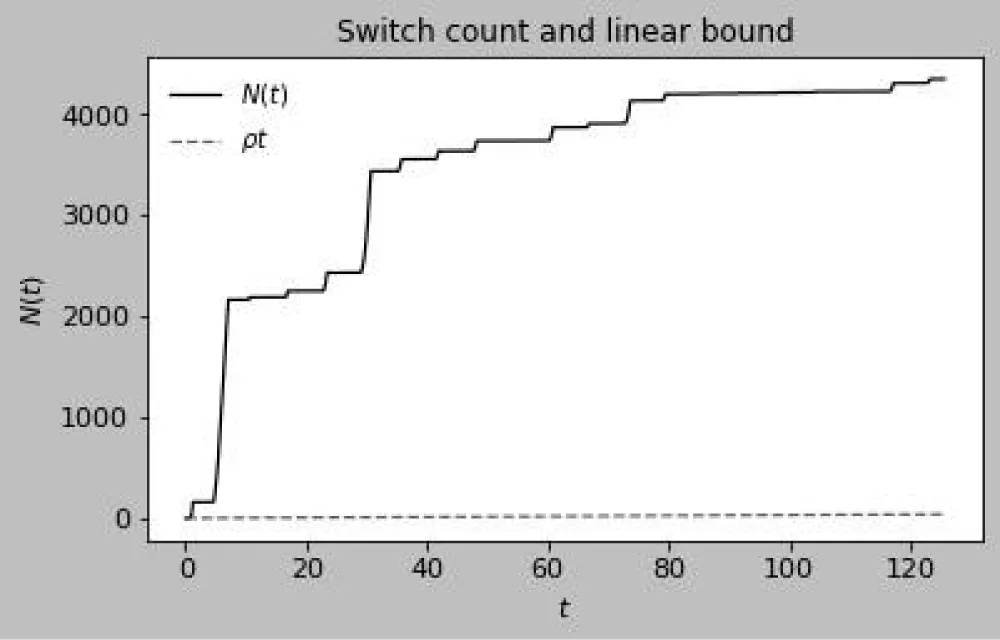
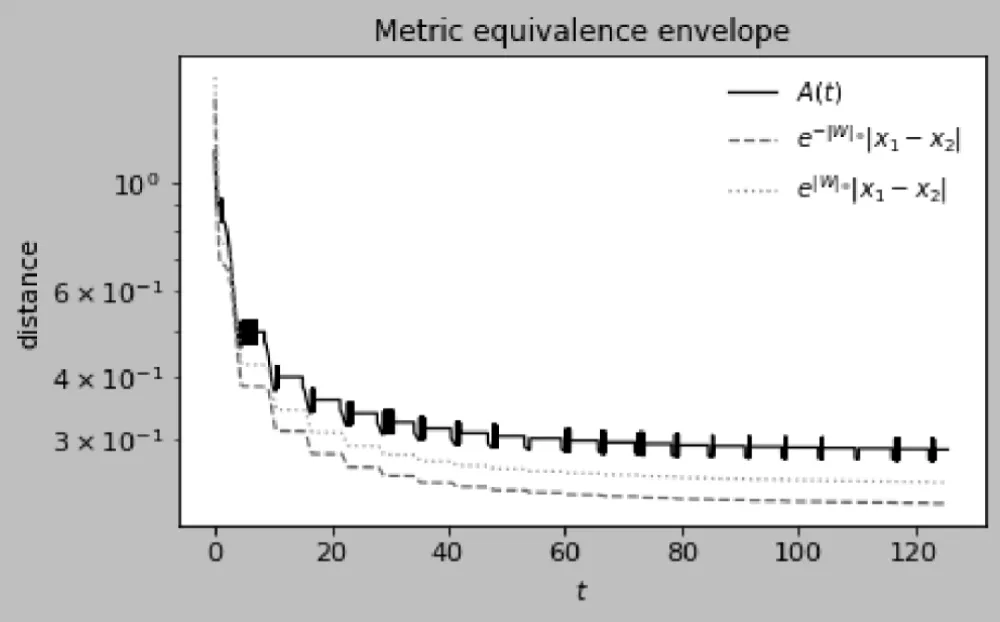
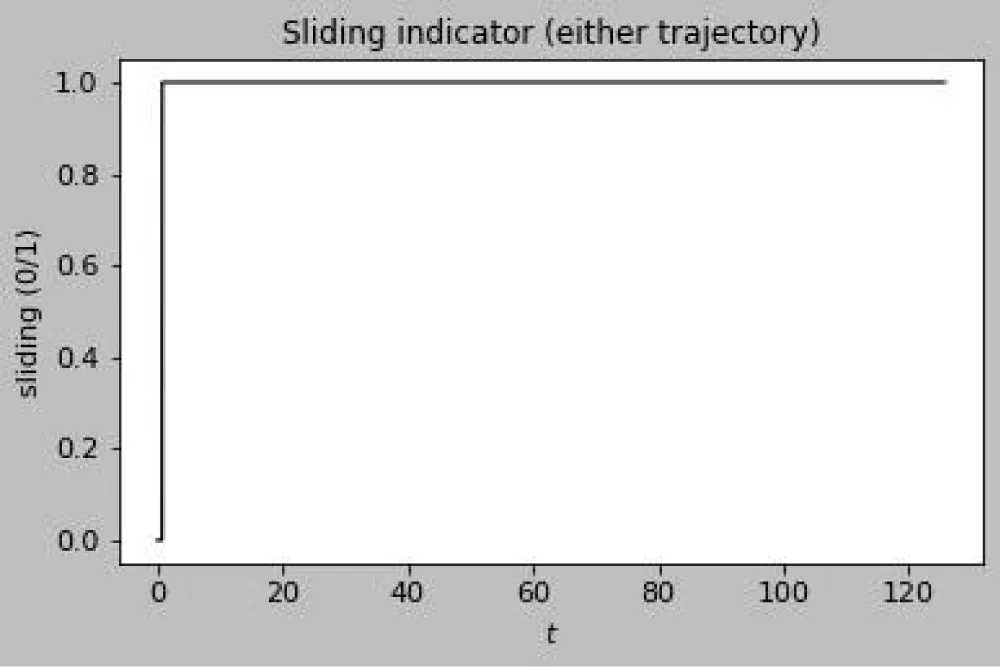
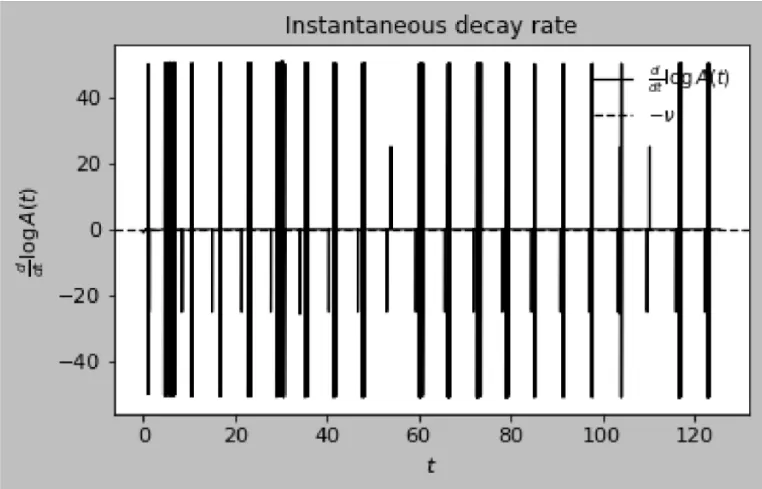
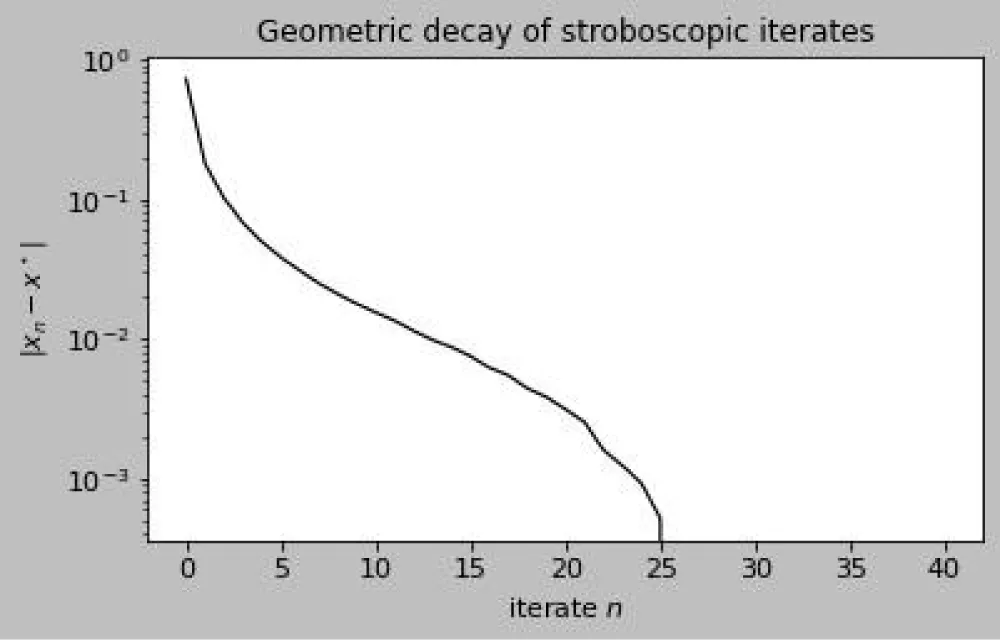
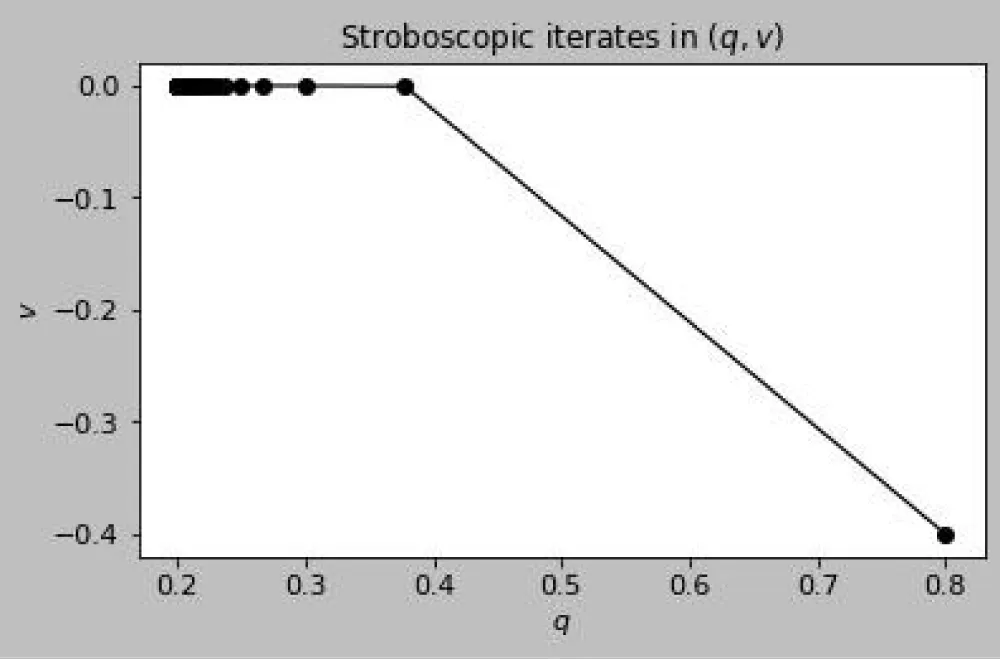
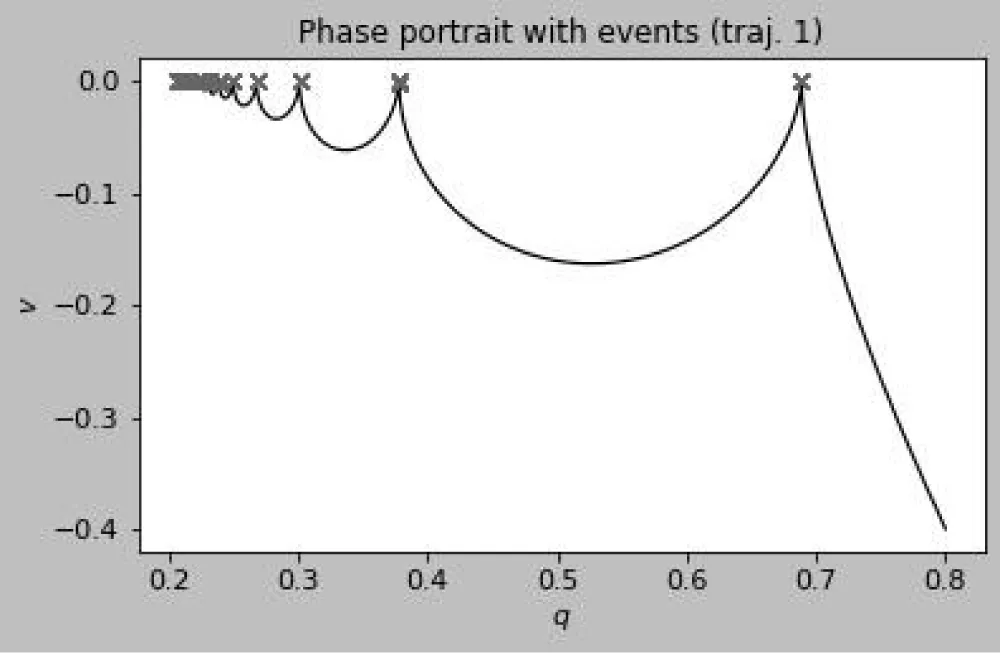
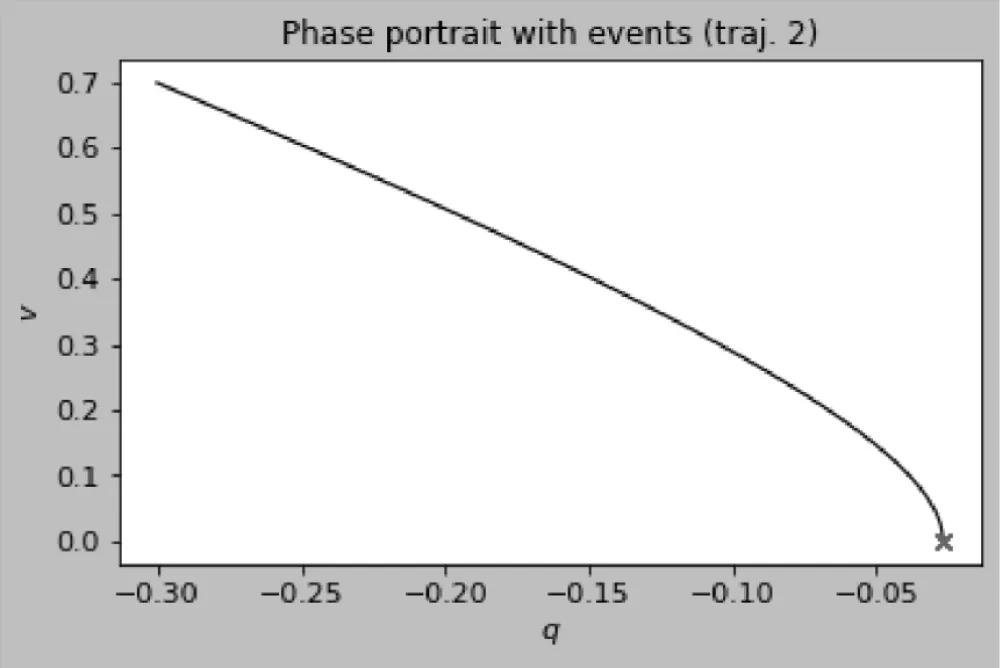


 Save to Mendeley
Save to Mendeley

